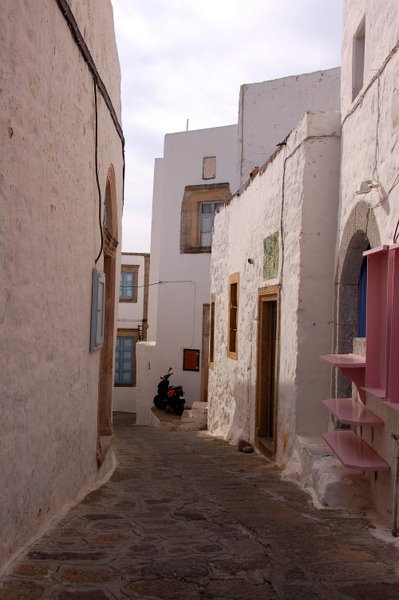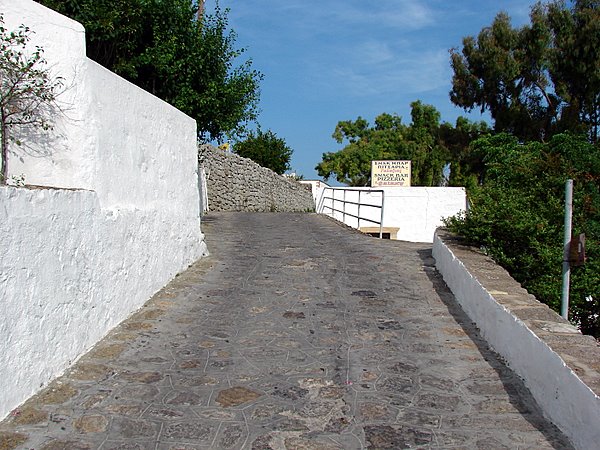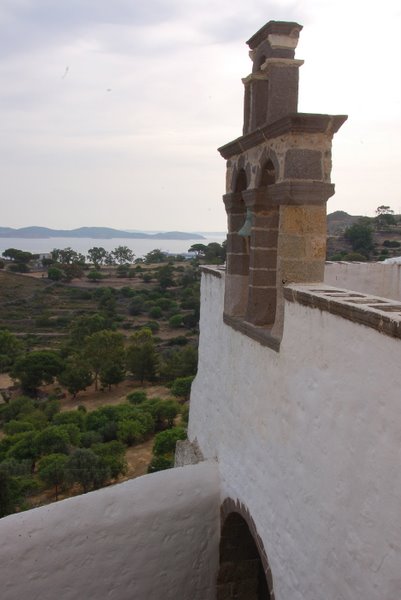
As if being exiled to the remote island of Patmos wasn’t enough, some people think John was stuck in a cave when he wrote the book of Revelation. What’s interesting to me is that the island was uninhabited for a few hundred years after John died, so .. how could anyone know where he was when he received his vision? I should know better: Turns out that a very spiritual woman had a vision and was able to identify where John was when he had his vision. (I don’t think it was the Oracle at Delphi that revealed the mystery).
So now St. John’s Grotto is a tourist attraction for the curious and the religious. They don’t charge you anything to check it out. The cab drivers, on the other hand, do make a healthy living driving people up the hill to see his grotto and the monastery a few hundred feet above it. Our cab of 4 cost 25 Euros – a fraction of the official tour, but a fist-full of money nonetheless. At today’s exchange rates, that works out to almost $40 for a 5-minute cab ride up and down. *sigh*
But it’s still cheaper than the official tour. Who needs guided tours, right?
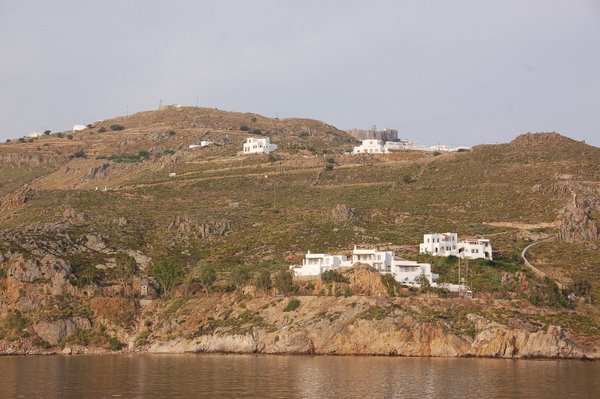 |
Here’s a view of the island of Patmos from the Skala Harbor. |
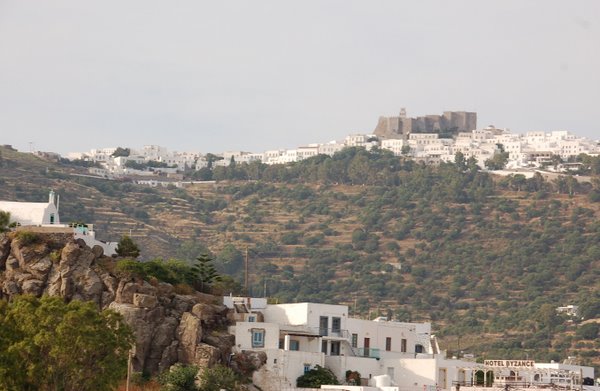 |
The monastery in the background sits a few hundred feet uphill of the cave where John supposedly received his vision. |
 – 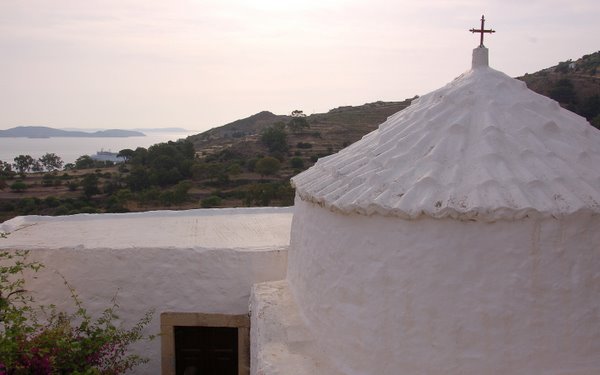 – 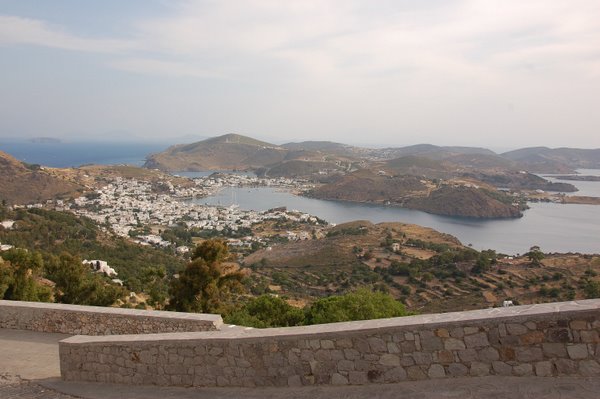 Skala Harbor
|
The small, hilly island (34.6 square kilometers) was populated from as early as 500 BC by Dorians, next the Ionians, and then the Romans from the 2nd century BC. The earliest known temples on the island were the 4th century BC sanctuary of the goddess Diana and a temple of Apollo. Scholars suspect that the name Patmos may derive from Latmos or Mt. Latmos of Turkey, where the goddess was worshipped (Diana is the Roman name for Artemis, Apollo’s sister). During the period of Roman rule the island fell into decline, the population decreased, and the island was used as a place of banishment for criminals and political and religious troublemakers. In 95 AD, St. John the Theologian – one of the twelve disciples of Jesus – was sent into exile on the island. St. John remained on the island for eighteen months during which time he lived in a cave below the hilltop temple of Diana. In this cave exists a fissure, or small hole in the rock wall, from which issued a series of oracular messages that Prochoros, a disciple of St. John, transcribed as the Biblical chapter of Revelations. During his time in the sacred cave, now known as the Holy Grotto of the Revelation, St. John also composed the Fourth Gospel.In 313 AD, Christianity was officially recognized as the religion of the Roman Empire and from this time the new faith spread rapidly throughout the Greek islands. The eastern Christian empire of Byzantium exercised control over the isle of Patmos and in the 4th century the remains of the ancient shrine of the goddess Diana were used by monks to construct a church dedicated to Saint John. This church was erected directly upon the foundations of the earlier temple of Diana. Sometime between the 6th and 9th centuries the church was destroyed when the island was subjected to frequent raids by the Arabs. Left deserted after these raids, Patmos next entered history in 1088 when a Byzantine emperor granted the island to the monk Christodolous, whose intention it was to establish a monastery. Built upon the remains of the old church and the older shrine of Diana, the monastery of St. John has been in continuous operation for over 900 years. Subjected to raids by Saracens and Norman pirates during the 11th and 12th centuries, the monastery was frequently enlarged and fortified, giving it the castle-like appearance it retains today. In the monastery exist some of the oldest and most accurate transcriptions by early Greek philosophers, including Aristotle. The small town of Hora surrounding the monastery dates mostly from the mid 17th century and its labyrinthine street arrangement was purposefully designed to confuse pirates intent on raiding the town and monastery. – SacredSites.com |
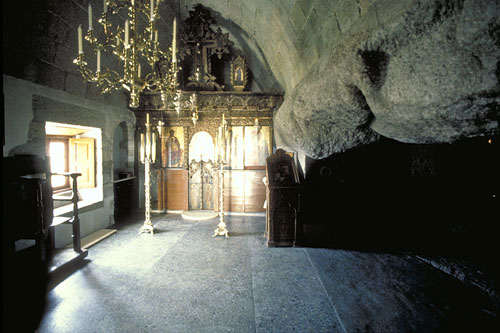 SacredSites.com |
I didn’t take this photo. |
| Experiencing the Grotto of St. John is a bit different. It wouldn’t be right to just take a photo, so I took a video. |
Bay of Patmos
Outside the Grotto of St. John
Bay of Patmos

